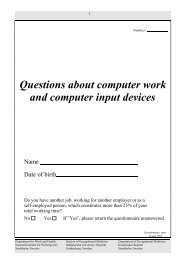Within Device Manager, locate the hardware device you want to enable. Specific hardware devices are listed under the major hardware categories. Navigate through the categories of hardware devices by choosing the icon, or + if you're using Windows Vista or Windows XP. The port and miniport drivers, which can be of type WaveCyclic or WavePci, bind together to form a wave filter that represents the capture device. This device typically captures an analog signal from a microphone or other audio source and converts it to a wave PCM stream. 5) In the Updates tab, highlight Drivers and select 'Update Selection' on the right hand side of Line 6 Monkey's user interface. 6) Monkey will connect to our server and download the appropriate drivers for your Line 6 device. 7) After the drivers are downloaded, Line 6 Monkey will exit so the Driver Install Wizard can launch. For more info about the Surface MSI naming convention, see Deploy the latest firmware and drivers for Surface devices. If there's not an.msi file that corresponds to the build of Windows 10 you have installed, select the.msi file that's closest to (but still lower than) your build number. A library of over 250,000 device drivers, firmware, BIOS and utilities for Windows.
Drivers Comat Input Devices Device
This article helps to fix an issue in which Windows 10 doesn't install specific drivers for USB audio devices on the first connection.
Original product version: Windows 10, version 1703
Original KB number: 4021854
Symptom
When you connect a USB audio device to a Windows 10 Version 1703-based computer the first time, the operating system detects the device but loads the standard USB audio 2.0 driver (usbaudio2.sys) instead of the specific device driver.
Cause
This issue occurs because the USB audio 2.0 driver (usbaudio2.sys) isn't classified as a generic driver in Windows 10 Version 1703. Therefore, the system assumes that a compatible, nongeneric driver is installed for the device even though the driver is generic.
This issue also causes Windows 10 Version 1703 to postpone the search for other compatible drivers through Windows Update that typically occurs immediately after you install a new device.
Resolution
To fix this issue, use one of the following methods.
Method 1
To resolve this issue, install update 4022716.
Method 2
If the device-specific driver is distributed through Windows Update, you can manually update the driver by using Device Manager. For more information about how to do this, see update drivers in Windows 10.
Method 3
If the device is not yet connected, first install the device-specific driver, such as by using the appropriate installer. After the device-specific driver is installed, Windows 10 will select that driver instead of the standard USB audio 2.0 driver when you first connect the device.
Note
See the device manufacturer's user guide for specific instructions about how to install the driver.
Method 4
If the driver isn't distributed through Windows Update, you can manually reinstall the driver. To do this, follow these steps:
- Install the device-specific driver (see Method 2).
- Open Device Manager.
- Right-click (or tap and hold) the name of the device, and then select Uninstall.
- Restart the computer.
Drivers Comat Input Devices Types
When it restarts, Windows will try to reinstall the device by using the device-specific driver.

 -->
-->